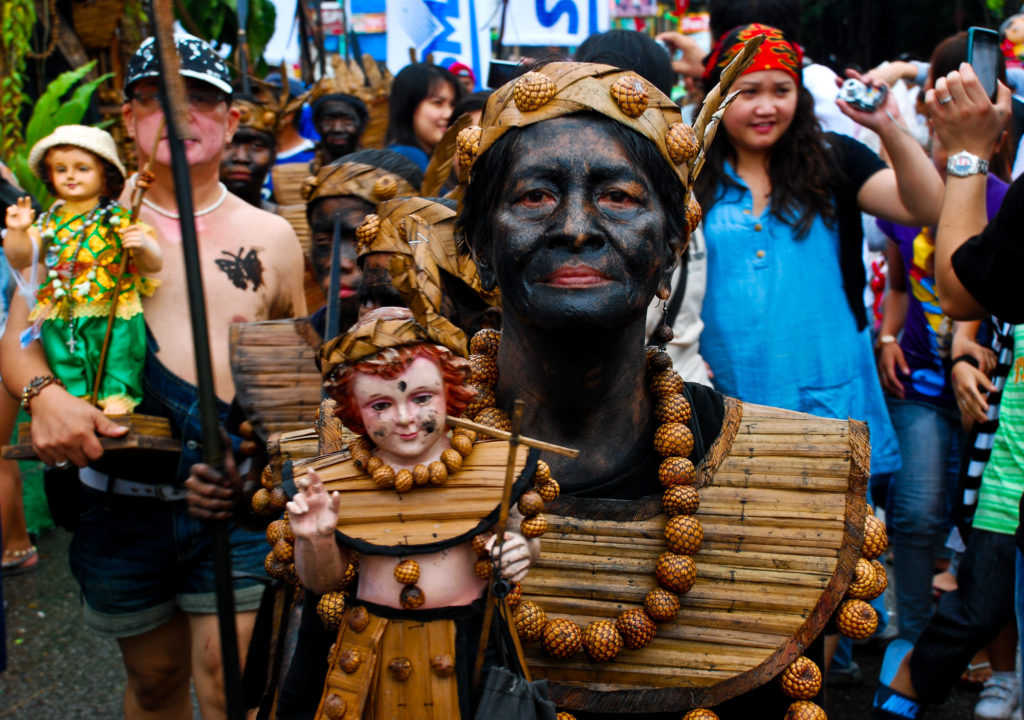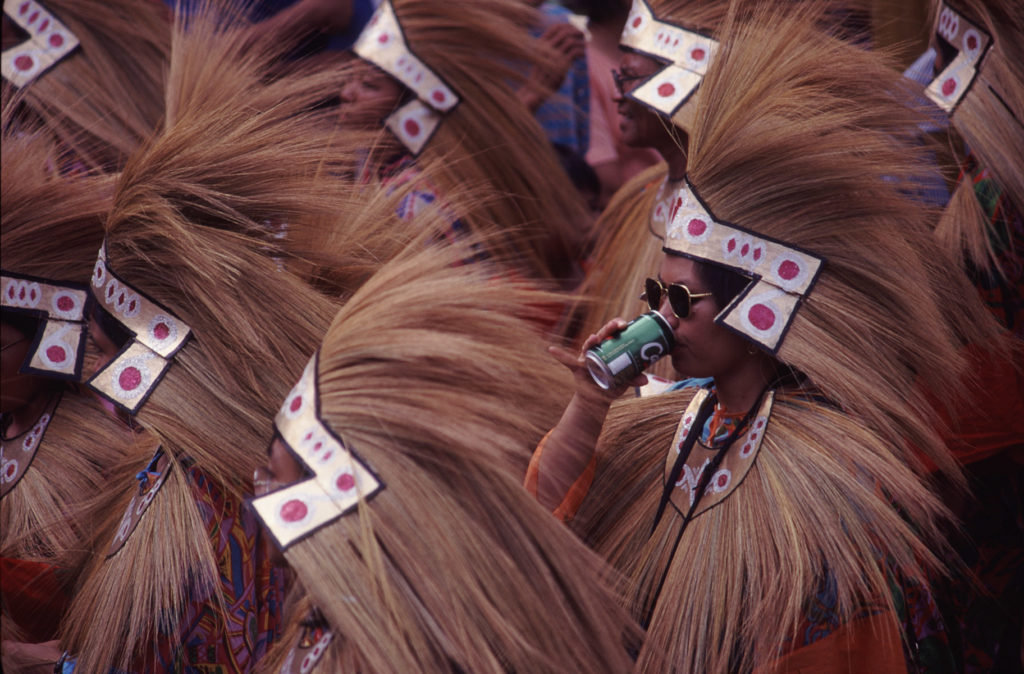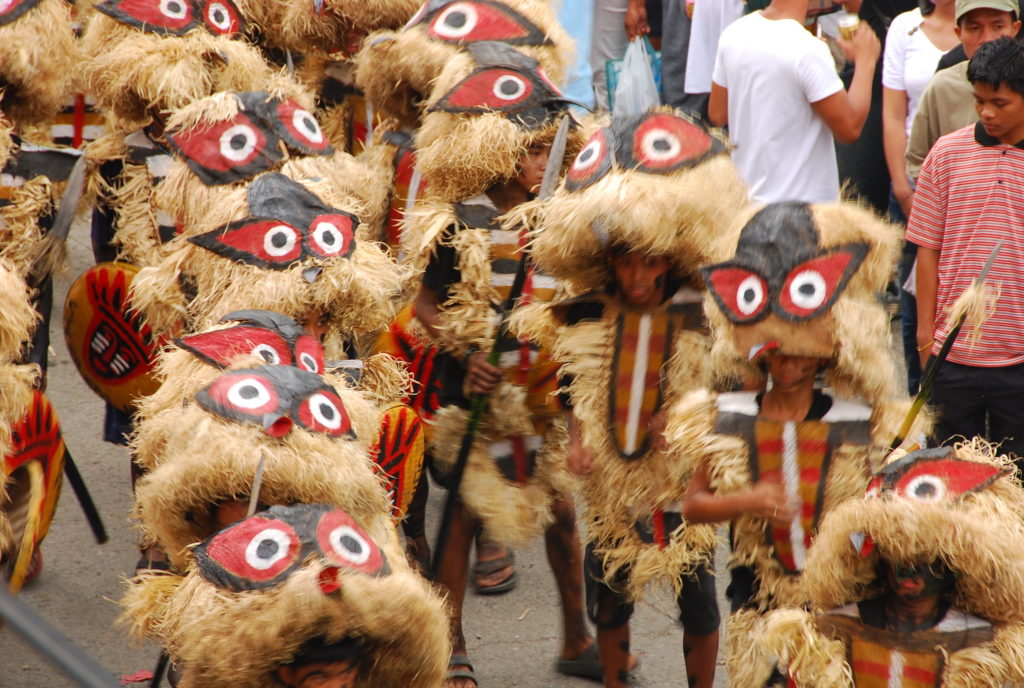Published on October 17, 2017

The patchwork of cultures that swept over Southeast Asia in the past millennia have left their mark on the local calendars. Buddhist temple festivals in Thailand, Laos and other Buddhist majority countries; the Islamic calendar in Indonesia and Malaysia; and the Catholic moveable feasts of the Philippines all contribute to the parties to be had year-round around the region.
The biggest feasts – such as Songkran in Thailand and Chinese New Year/Tet in most of the region – tend to overshadow the smaller, less-visited festivals. That’s the visitor’s loss. These smaller festivals compensate with an abundance of character, spirit and energy that you won’t easily find in other celebrations.
We asked two different bloggers – Where Sidewalks End‘s Ian Ord and Love and Road‘s Rob Cadore – to tell us about the off-the-beaten-path festivals they were lucky enough to visit.

Sacred Ink: Thailand’s Wai Kru Sak Yant Festival
Many Thais believe in the sacred power of sak yant tattoos. These decorations consist of sacred designs annotated with holy Pali script, tapped into the skin with bamboo needles. Devotees believe sak yant bring spiritual protection and benefits to the wearer.
Where Sidewalks End‘s Ian Ord got his own sak yant at Wat Bang Phra in Nakhom Pathom Province, a notable center for receiving and blessing sak yant. The Wai Kru Sak Yant festival every March brings in thousands of devotees, who mainly come to have their tattoos “recharged” with sacred energy.
“The Wai Kru at Wat Bang Phra is definitely the largest, with crowds exceeding 10,000 people coming every year,” Ian explains. “It’s an incredible thing to partake in, and one of my most memorable and life changing experiences I’ve had in my 20+ years of travelling.”
(For more information on these sacred bamboo tattoos, read Ian’s Sak Yant Frequently Asked Questions.)
Many devotees get their tattoos done on the night before the festival at Wat Bang Phra; the ajarn, or master monks, work overtime creating and sanctifying as much as 1,000 sak yant.

Foreigners can participate just as much as locals, but to a point. “Being involved really depends on how deep the belief the foreigner has for the spirits of the sak yant,” Ian explains. “It should really be reserved for those who have had a sak yant at this particular temple…. But as long as foreigners stay out of the way and are respectful, then no harm is really perceived.”
The Wai Kru Sak Yant festival is “quite the spectacle, though you can really feel the energy in the air,” Ian tells us. “Even though I didn’t become possessed, I certainly felt adrenaline rushing through my veins and my hair was standing on end – it is electric.”
Read about Thailand’s Yasothon Bun Bangfai Festival.

A Catholic Carnival: the Philippines’ Ati-Atihan Festival
Love and Road‘s Rob Cadore found a Filipino festival exploding only two hours’ drive away from the Philippines’ Boracay Island – and dove in head-first.
The overwhelmingly Catholic culture of the Philippines places a heavy emphasis on devotion to the Christ Child – the Santo Nino – that reaches fever pitch on the third Sunday of January. In the city of Kalibo, Aklan, the locals are accustomed to celebrating the festival with a street parade that snakes down the city’s main avenues.
“It is a mix of indigenous and Catholic celebrations,” Rob explains. “Ati-Atihan is the mother of all the festivals in the Philippines, that it’s old than the famous Sinulog that happens in Cebu.”
The black-faced parade goers look that way because of the island’s history, Rob tells us. “The meaning of the name ‘Ati-Atihan’ is to be like Aetas or Ati, the first people who lived in the island,” Rob says. “The Atis were indigenous people with black skin and curly hair, and that’s why most of the people have their faces painted in black during the street parades.”

Other parts of the festival include “colorful costumes, drumbeats, a lot of dancing and also praying,” Rob explains. “The festival starts with a [Catholic] Mass to emphasize the religious meaning of it and during the two weeks other celebrations are held during day and night time.”
The Ati-Atihan bears marks of its long history, rooted in both Catholic and earlier pagan traditions. “It’s quite interesting and complex,” Rob says. “And you can’t judge if it’s right or wrong, just respect the traditions and have fun with them.”
Foreigners visiting during Ati-Atihan will be drawn into the fun, whether they like it or not, Rob says. “Filipino people are one of the most welcoming people we ever met,” he tells us. “We were by the street watching the parade when one lady took us by the hand and invited to join the parade…. that is the best welcome any foreigner can receive.”
* * * *
Ian Ord is one of several travelers managing Where Sidewalks End; follow this site on Facebook, Twitter and Instagram.
Rob Cadore and his wife Nat blog at Love and Road. you can follow their adventures on their social media channels: Facebook, Instagram and Twitter.






